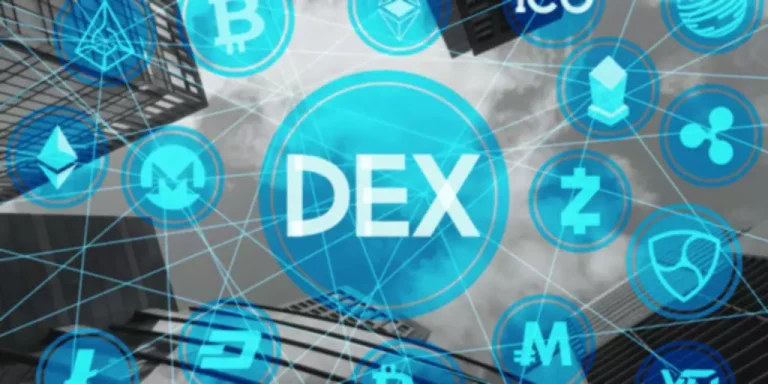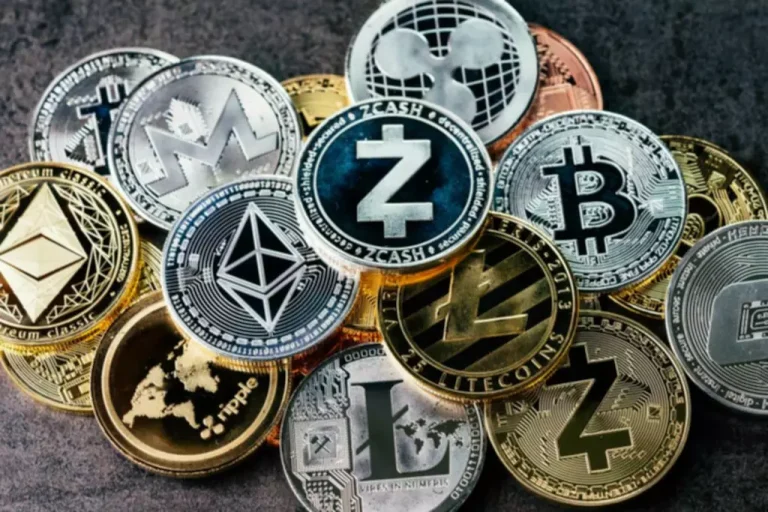Content
It is often described as a digital ledger of duplicate transactions that are spread across many computer networks [2, 40]. An example of products formed out of blockchain technology include Bitcoin, Ethereum, Litecoin, Cardano, Polkadot, Bitcoin Cash, Stellar and Chainlink. At its core, DeFi refers Exchange (organized market) to a system of financial applications built on blockchain technology, aiming to provide open, permissionless and transparent digital finance services. Unlike traditional finance, which relies on centralised institutions like banks and intermediaries, DeFi operates autonomously through smart contracts, eliminating intermediaries from the equation and facilitating peer-to-peer transactions. This decentralised approach not only enhances accessibility but also promotes financial inclusion, enabling individuals worldwide to access digital finance services without geographic or socioeconomic barriers. Decentralized finance (DeFi) refers to a set of newly emerging financial products and services that operate on decentralized platforms using blockchains to record and share data.
Bank to the Future: Beware of Decentralized Finance (DeFi)
Instead of a central authority enabling a transaction to occur, a smart contract is programmatically enabled to perform the financial transaction that is specified in the contract. A smart contract can hold cryptocurrency assets that can be sent from one entity to another. DeFi protocols are supporting an array of online marketplaces that allow open finance vs decentralized finance users to exchange products and services globally and peer-to-peer—everything from freelance coding gigs to digital collectibles to real-world jewelry and apparel. DeFi is still an emerging space with attendant risks around smart contract bugs and breaches. A number of innovative insurance alternatives have come to market to help users buy coverage and protect their holdings.
- When it comes to labor market considerations, financial accounting and auditing is a regulated profession.
- The result is that many more people can access financial services at lower costs or receive better interest rates than those offered by traditional financial institutions.
- According to our interviews, auditors usually begin by using automated bug detection software to scan smart contracts for potential vulnerabilities.Footnote 23 Since these automated tools are still new, they are susceptible to reporting false positives.
- DeFi applications are designed to communicate with a blockchain, allowing people to use their money for purchases, loans, gifts, trading, or any other way they want without a third party.
- In contrast, the DeFi approach relies on smart contracts and a P2P decentralized approach to enable financial services.
Finding innovative ways to eliminate the risks inherent in DeFi investing
The composability of DeFi has unlocked opportunities for product developers to build DeFi protocols directly into platforms across a variety of verticals. Ethereum-based games have become a popular use case for decentralized finance because of their built-in economies and innovative incentive models. PoolTogether, for example, is a no-loss audited savings lottery that enables users to purchase digital tickets by depositing the DAI stablecoin, which is then pooled together and lent to the Compound money market protocol to earn interest. DeFi is https://www.xcritical.com/ an all-inclusive term for any application that uses blockchain and cryptocurrency techniques or technology to offer financial services.
Transforming financial operations with smart automation
The Monetary Authority of Singapore (MAS) has not banned or restricted blockchain-enabled crypto activities. The term decentralized finance (DeFi) refers to an alternative financial infrastructure built on top of the Ethereum blockchain. DeFi uses smart contracts to create protocols that replicate existing financial services in a more open, interoperable, and transparent way. This article highlights opportunities and potential risks of the DeFi ecosystem. I propose a multi-layered framework to analyze the implicit architecture and the various DeFi building blocks, including token standards, decentralized exchanges, decentralized debt markets, blockchain derivatives, and on-chain asset management protocols. I conclude that DeFi still is a niche market with certain risks but that it also has interesting properties in terms of efficiency, transparency, accessibility, and composability.
A decentralized finance platform is a consumer-facing financial interface that require blockchain technology and crypto stakers to operate [14]. Decentralized exchanges (DEXs) are exchanges that allow the trading of digital assets without any centralized controller. DEXs aim to replace the market-making and custody features of exchanges with a powerful algorithm that adjust prices and execute trades based on available liquidity [14]. Decentralized finance (DeFi) has emerged to offer traditional financial services such as lending, borrowing, and trading without intermediaries (e.g., banks).
Anyone with an Internet connection can access DeFi applications while maintaining control of their data and assets. DeFi technology creates decentralized money and eliminates the necessity of government-controlled central banks to issue and regulate currency. But DeFi technology is also capable of providing many other blockchain-based solutions for financial services. Fintech companies use DeFi technology to offer savings accounts and loans, enable securities trading, and provide insurance, among other offerings. To understand the novelty of smart contracts, we first must look at regular server-based web applications. When a user interacts with such an application, they cannot observe the application’s internal logic.
Overall, regulators in Middle Eastern countries have been generally cautious about blockchain technology. For example, the Central Bank of Bahrain (CBB) spent a significant amount of time studying the strengths of blockchain crypto assets before developing a relevant regulatory framework. Also, it is important to point out that the high regard for cultural and Islamic norms in Middle Eastern countries can lead to the rejection of some of the current ideals of decentralized finance.
In the age of Economy-of-Things, where machines can “talk” to each-other, DeFi will enable every product or service to become self-driving. The concept of Embedded Finance — integrating financial services with a traditionally non-financial, service or product — will be significantly enhanced. Interestingly, another type of DeFi application is becoming available to address these deficiencies.

Aave lets you stake any of your crypto assets to earn interest income from users who might borrow your assets. Today, you might put your savings in an online savings account and earn a 0.50% interest rate on your money. The bank then turns around and lends that money to another customer at 3% interest and pockets the 2.5% profit. With DeFi, people lend their savings directly to others, cutting out that 2.5% profit loss and earn the full 3% return on their money.

Furthermore, DeFi platforms enable users to trade digital assets seamlessly, providing liquidity and fostering a vibrant ecosystem of decentralised exchanges. By deploying immutable smart contracts on Ethereum, DeFi developers can launch financial protocols and platforms that run exactly as programmed and that are available to anyone with an Internet connection. We begin our data gathering from the year 2017 because there are only a few audit reports in DeFiYield’s database before then. The audit reports we collect are in PDF format, so we perform an extensive hand-collection to create our database of audit report characteristics, including information on the ventures, the auditors, the audit process, and the audit outcomes.
This means that processes and outputs can differ significantly for SCAs (Bauer et al. 2023). Decentralized finance (DeFi) describes the broad concept of blockchain-powered financial services free from the intermediaries of traditional banking. Also, note that crypto may be more susceptible to market manipulation than securities, and DeFi platforms may be more vulnerable to security concerns than centralized finance platforms. Crypto holders and DeFi users do not benefit from the same regulatory protections applicable to registered securities. Crypto is also not insured by the Federal Deposit Insurance Corporation or the Securities Investor Protection Corporation, meaning you should only buy crypto or interact with DeFi protocols with an amount you’re willing to lose.
Google Scholar search engine was used to identify the relevant articles in the decentralized finance literature. Google Scholar was used because it is the world’s most recognized web search engine that indexes the full text or metadata of scholarly literature across an array of publishing formats and discipline. The keyword “decentralized finance” was inserted into Google Scholar search engine and the search period is from 2020 to 2022. During the collation process, all policy articles, conference articles, white papers, consultative articles and academic papers that were found in the Google Scholar search results were included while all non-English articles or books were excluded.
Another issue that is of great concern to policymakers is that decentralized finance innovations can destroy many non-tech jobs than it creates. DeFi will require the gradual removal of traditional financial intermediaries from the financial ecosystem and promote peer-to-peer transactions. While financial intermediaries increase the cost of financial transactions, they also create jobs that ultimately benefit the economy. There is concern that a full-fledge adoption of decentralized finance will lead to massive loss of intermediary jobs which cannot be immediately replaced by DeFi alternatives.
With centralized models, there is a core foundational authority that can influence and control the flow of transactions. Further challenges facing decentralized finance include its reliance on energy to power blockchain technology. This amount of energy can create an unsustainable environmental impact and cause a damaging carbon footprint, so ecological concerns are also a factor that DeFi will have to face as it continues to develop. Decentralized finance provides a radical new alternative to the traditional model of financial institutions. The aim of decentralized finance is to do away with the intermediary powers who typically control and direct financial institutions. Instead, DeFi allows individuals and organizations to utilize new technologies and transact directly.
Advocates believe DeFi can make it easier for more people to access lending, as approval doesn’t rely on many of the strict criteria required by traditional lenders. DeFi lending involves supplying crypto to protocols which, in turn, can be borrowed in exchange for interest. Borrowers must provide collateral in the form of other crypto assets, which are sometimes worth more than the value of the amount they want to borrow. Hypothetically it supplies crypto liquidity to a borrower who may not wish to sell the specific crypto assets that are being put up for collateral. DeFi users are responsible for managing their own assets, and doing good diligence before using DeFi DApps. There’s always the risk of bad actors trying to steal your assets, or faulty smart contracts that give hackers an opportunity to exploit.

 English
English